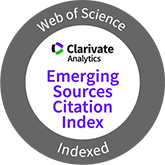Santa Comba de Bande (Orense). Arquitectura y documentación escrita
DOI:
https://doi.org/10.3989/arq.arqt.2003.26Keywords:
Stratigraphy, apriorism, document, Bande, Alfonso IIIAbstract
The application of the stratigraphic method to the study of architecture implies, in more than a few cases, arguing against the traditional ideas in place in each case. Santa Comba de Bande is one example of this. The uncritical reading of a document from the nearby monastery of Celanova was first used to sketch an idea of the origin and evolution of the temple that has profoundly marked the various approaches to the building during more than a century of research. The results from the analysis of facings show a series of contradictions between the contents of the document and material reality, which makes it necessary to relativize the value of the document in question as a source of reliable information, while also showing the dangers involved in working from aprioristic principles in archaeological interpretation.
Downloads
Downloads
Published
How to Cite
Issue
Section
License
Copyright (c) 2003 Consejo Superior de Investigaciones Científicas (CSIC) - Universidad del País Vasco/Euskal Herriko Unibertsitatea (UPV/EHU)

This work is licensed under a Creative Commons Attribution 4.0 International License.
© CSIC. © UPV/EHU. Manuscripts published in both the print and online versions of this journal are the property of Consejo Superior de Investigaciones Científicas and Universidad del País Vasco/Euskal Herriko Unibertsitatea, and quoting this source is a requirement for any partial or full reproduction.
All contents of this electronic edition, except where otherwise noted, are distributed under a Creative Commons Attribution 4.0 International (CC BY 4.0) licence. You may read the basic information and the legal text of the licence. The indication of the CC BY 4.0 licence must be expressly stated in this way when necessary.
Self-archiving in repositories, personal webpages or similar, of any version other than the final version of the work produced by the publisher, is not allowed.














